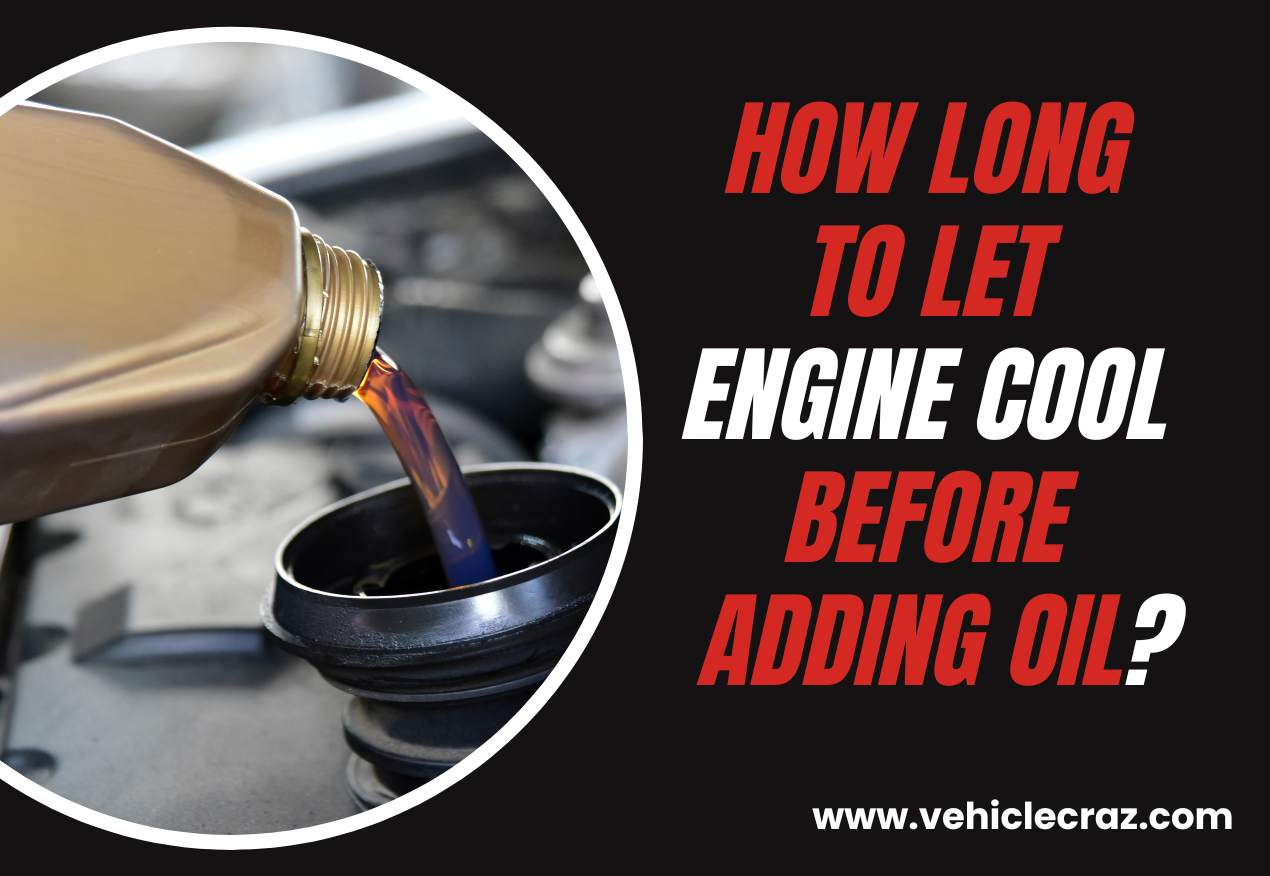How Long to Let Engine Cool Before Adding Oil?
You know it’s essential to top up the oil to keep your engine running smoothly, but you’re unsure how long to wait before adding oil to a warm engine. Did you ever think to yourself how long to let the engine cool before adding oil?
Today, we will explain the importance of letting your engine cool before adding oil, how long you should wait, and some important info. Let’s start.
How Long to Let Engine Cool Before Adding Oil?
We recommend to let your engine cool for about 10 to 15 minutes before adding oil. This allows the engine to cool down sufficiently, reducing the risk of burns and ensuring that the oil will be at a safe temperature for handling.
Additionally, adding oil to a warm engine can affect the accuracy of your oil level reading, as warm oil expands and may give a false reading. Waiting for the engine to cool ensures a more accurate oil level check and helps prevent overfilling. We will explain everything in detail in a minute.
How Long Does it Take for an Engine to Cool Down After Driving?
As a general guideline, it can take anywhere from 30 minutes to several hours for an engine to cool down completely after driving.
That said, the time it takes for an engine to cool down after driving can vary depending on several factors, such as the ambient temperature, the engine’s operating conditions, and the type of cooling system in the vehicle.
During this cooldown period, the engine dissipates heat through its cooling system, which includes the radiator, cooling fan, and coolant. The engine continues to radiate heat even after the vehicle is turned off, so it’s essential to use caution when working around a recently driven vehicle.
As we mentioned, to ensure an accurate oil level reading and prevent injury, it’s advisable to wait at least 10 to 15 minutes after turning off the engine before attempting to add engine oil.
Why is it Important to Let the Engine Cool Before Adding Oil?
It is important to let the engine cool before adding oil for several reasons.
Adding oil to a hot engine can be dangerous due to the high temperature of the engine components and the oil itself. When the engine is running, the oil circulates through various parts of the engine, absorbing heat and becoming very hot. If you attempt to add oil to the engine while it is still hot, there is a risk of the hot oil splashing out or spilling onto your skin, causing severe burns.
When oil is warm, it expands due to the heat absorbed by the engine. This expansion can cause the oil level to appear higher on the dipstick than it actually is when the oil cools down to its normal operating temperature.
If you add oil to a warm engine based on this inflated reading, you may end up overfilling the engine, which can lead to a range of issues. Overfilling can cause the oil to foam, reducing its lubricating properties and potentially leading to engine damage. It can also put excess pressure on seals and gaskets, leading to leaks and other issues.
In addition, by allowing the engine to cool before checking the oil level and adding oil, you ensure that the oil has returned to its normal operating temperature and that the dipstick reading is accurate. This helps prevent overfilling and ensures that the engine has the correct amount of oil for optimal performance and longevity.
When oil is exposed to high temperatures in a hot engine, it undergoes thermal breakdown, which can cause it to degrade and lose its effectiveness as a lubricant. This breakdown is accelerated when fresh oil is added to a hot engine, as the heat can cause the oil to break down more quickly.
When oil breaks down, it loses its ability to lubricate and protect the engine’s moving parts effectively. This can lead to increased friction and wear on engine components, potentially leading to premature engine failure.
Allowing the engine to cool before adding oil helps maintain the oil’s quality by reducing the temperature at which it is added to the engine.
Precautions When Adding Motor Oil to a Hot Engine
Here’s a thorough explanation of the precautions when adding motor oil to a hot engine:
- Before adding motor oil to a hot engine, it’s essential to allow the engine to cool down for a few minutes. This reduces the risk of burns from hot engine components and makes the oil change process safer.
- Wear protective gear such as gloves and eye protection when adding oil to a hot engine. This protects your hands from hot surfaces and oil splashes and your eyes from any potential hazards.
- When opening the hood of your vehicle, be mindful of any hot surfaces, such as the hood itself or nearby engine components. Use caution to avoid accidentally touching these hot surfaces.
- Locate the oil fill cap on the engine. This is usually labeled and can be found on top of the engine. Remove the cap carefully to avoid contact with any hot surfaces.
- While not always necessary, removing the dipstick can help prevent pressure buildup in the crankcase as you add oil to the engine. This can also help you get a more accurate oil level reading after adding oil.
- Pour the correct amount of oil slowly using a funnel and carefully to avoid spills and splashes, which can cause burns or damage to engine components.
You May Also Like


I’m Alex, a seasoned mechanical teacher with over 20 years of hands-on experience in Australia. My passion for all things automotive has driven me to establish this blog, aiming to share my wealth of knowledge and expertise with fellow enthusiasts, DIYers, and anyone keen on understanding the mechanics behind the machines we rely on daily.







